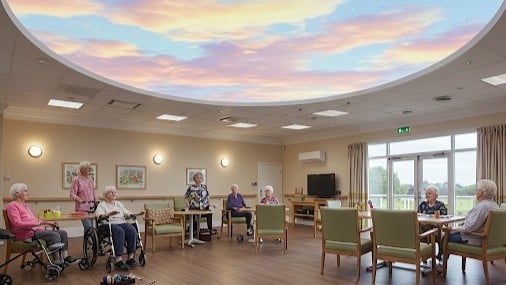Detroit Firm Revolutionizes Indoor Lighting with Advanced LED Lighting

The modern world, with its reliance on indoor environments, has created a disconnect between humans and natural light, leading to significant health consequences. The human circadian rhythm, a 24-hour internal clock, is heavily influenced by light exposure. Natural daylight, with its fluctuating color temperatures and intensities, regulates melatonin production and sleep-wake cycles. However, prolonged exposure to static artificial light disrupts these rhythms, contributing to sleep disorders, mood disturbances, and cognitive decline.
Research consistently highlights the positive effects of natural light on physiological and psychological well-being. Individuals with access to daylight experience improved sleep and increased productivity, while static artificial light can negatively impact alertness and hormonal balance.
To combat these challenges, a groundbreaking solution has emerged from a Detroit-based lighting manufacturer, Artificial Sky. Their “Virtual Sky” technology offers a sophisticated approach to replicating the dynamic properties of natural daylight. Utilizing advanced LED lighting, color matrices, complex algorithms, and artificial intelligence, Virtual Sky luminaires simulate the visual and biological effects of a natural sky. The technology creates the illusion of a blue sky with moving clouds, and simulates sunrise and sunset effects, providing a biodynamic lighting experience that supports circadian entrainment and promotes well-being.
“Virtual Sky technology is poised to revolutionize the built environment,” says Mark Jenzen, founder of Artificial Sky. “We’re not just providing light; we’re creating environments that support human health and well-being. By mimicking the dynamic properties of natural daylight, we’re bringing the outdoors in, transforming how we experience indoor spaces.”
The applications of Virtual Sky technology are vast. In healthcare settings, it can enhance patient recovery and improve staff well-being. In educational institutions, it can boost student alertness and concentration. In residential spaces, it can create a more natural and restorative living environment.
This innovative technology offers a promising solution to mitigate the adverse effects of artificial light exposure. By integrating biodynamic lighting principles, architects and designers can create spaces that prioritize human health, productivity, and overall quality of life. Virtual Sky represents a significant step towards bridging the gap between indoor environments and the natural world.
For more information on Virtual Sky technology please visit https://www.artificialsky.com
Artificial Sky
sales@artificialsky.com
Detroit
Michigan
United States
Information contained on this page is provided by an independent third-party content provider. XPRMedia and this Site make no warranties or representations in connection therewith. If you are affiliated with this page and would like it removed please contact pressreleases@xpr.media

